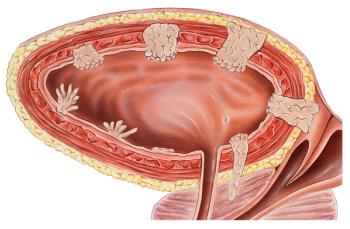
Study Identifies Racial Disparities for Men with Prostate Cancer Undergoing Radical Prostatectomy
After adjustments for a number of clinical factors and factors related to access to care, the overall survival disparity among men undergoing radical prostatectomy was significantly decreased, but not eliminated, for Black men.
A study published in Cancer suggested that after adjustments for a number of clinical factors and factors related to access to care, the overall survival disparity among men undergoing radical prostatectomy was significantly decreased, but not eliminated, for Blacks and significantly increased for Asian Americans and Pacific Islanders (AAPIs) compared to whites.
With an adjustment for all nonclinical and clinical factors, the survival disparity observed between Blacks and whites was decreased to 20%. Contrastingly, the survival disparity increased to 35% between AAPIs and whites. However, adjustments for these prognostic factors had little effect on the survival disparity between Hispanics and whites.
“As shown in this study, if Blacks had similar education levels, median household income, and insurance status, the survival disparity between Blacks and whites would decrease from 51% to 30%,” the authors noted. “Unfortunately, income inequality in the United States has continued to increase over the past 4 decades and may result in rising health inequalities.”
In this study of 526,690 patients with prostate cancer who underwent radical prostatectomy between 2004 and 2014 included in the National Cancer Database, researchers systematically evaluated the impact of clinical characteristics and factors related to access to care on survival by race. Specifically, the study included 432,640 white patients (82.1%), 63,602 Black patients (12.1%), 8990 AAPI patients (1.7%), and 21,458 Hispanic patients (4.1%).
When adjustments were made for age and year of diagnosis alone, Black patients had a 51% higher mortality, AAPI patients had a 22% lower mortality, and Hispanic patients had a 6% lower mortality compared to white patients. When adjustments were made for all clinical and nonclinical factors though, the Black-white survival disparity narrowed to 20%, whereas the AAPI-White disparity increased to 35%.
“Our findings are consistent with recent reports showing that racial disparities are greatest among patients with low-grade Gleason 6 disease, with Black men twice as likely to die of prostate cancer as non-Black men, and Black patients with low-risk prostate cancer are more likely to harbor higher risk disease, which may lead to adverse outcomes,” the authors explained. “These findings suggest that during individualized counseling for men with low-risk prostate cancer, race should be considered when treatment options are being discussed.”
Notably, of the controlled-for factors, education, median household income, and insurance status contributed the most to the observed racial disparity.
Importantly though, a major limitation of this study was missing information on cancer recurrence and causes of death. Therefore, the investigators could not analyze the cause-specific mortality. Additionally, the study had a relatively short follow-up time of only 5.5 years.
Moving forward, the researchers recommended other health-related factors such as genetic and lifestyle factors like smoking, drinking, obesity, and physical inactivity that were not evaluated in this study be investigated for their contribution to the racial survival disparity. Further, it was suggested that future “studies with cause-specific mortality and longer follow-up times are warranted to further investigate racial disparities in the cancer-specific survival of prostate patients.”
Reference:
Wen W, Luckenbaugh AN, Bayley CE, Pension DF, Shu X. Racial Disparities in Mortality for Patients With Prostate Cancer After Radical Prostatectomy. Cancer. doi: 10.1002/cncr.33152
Newsletter
Stay up to date on recent advances in the multidisciplinary approach to cancer.


























































































